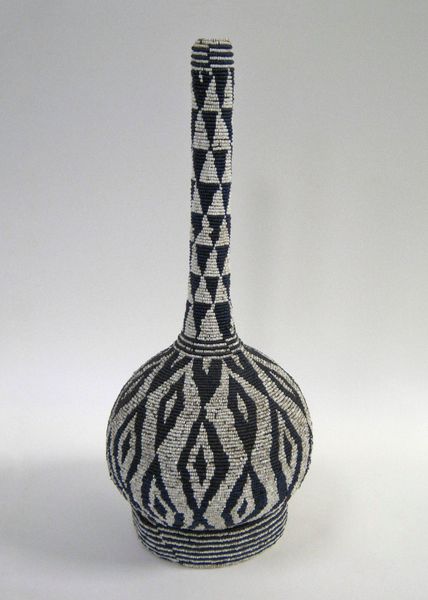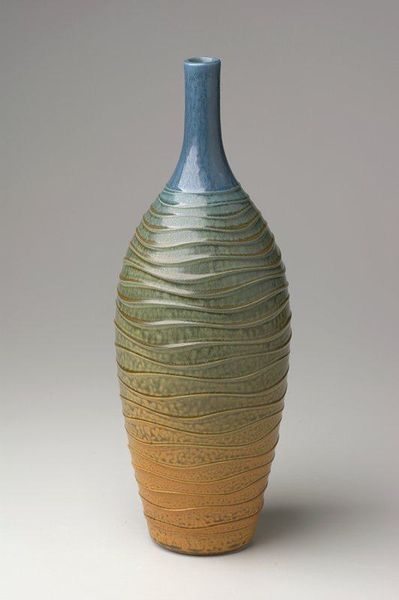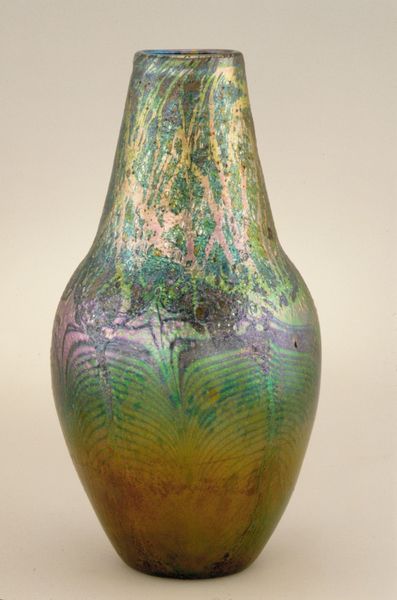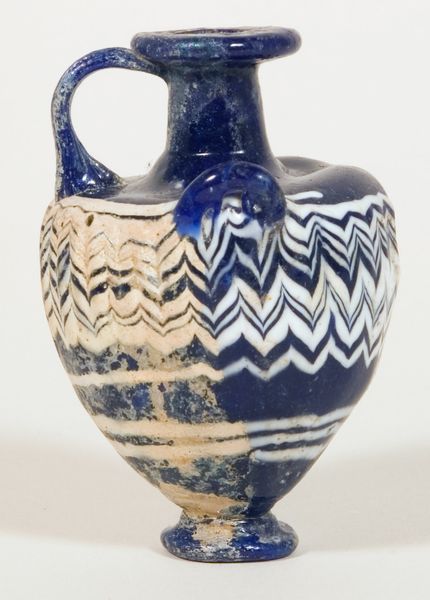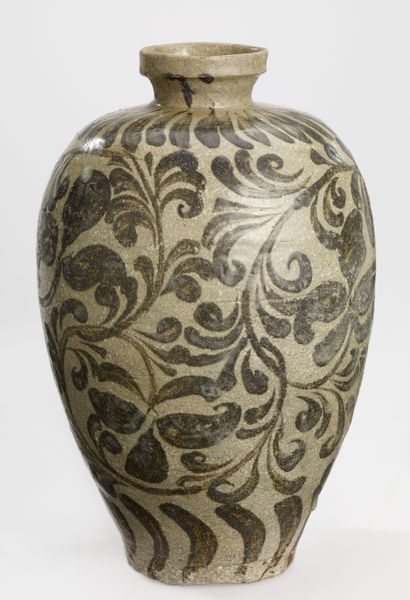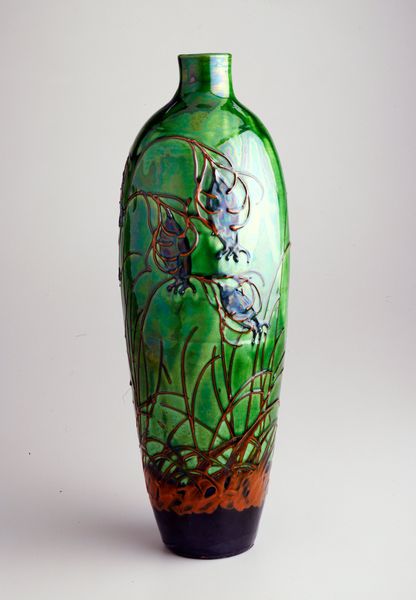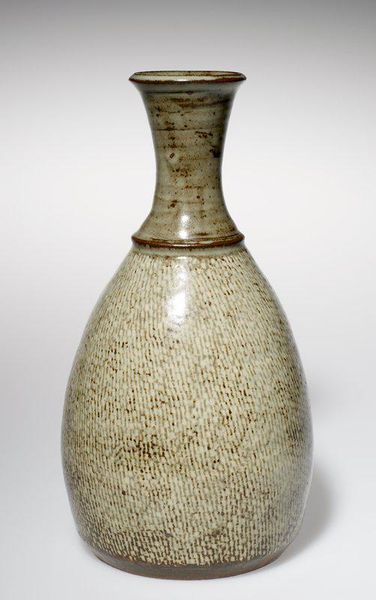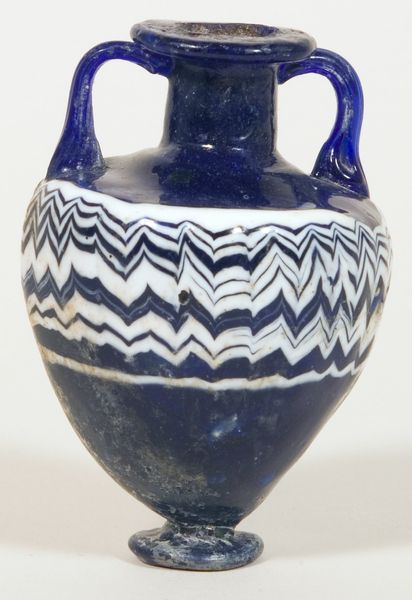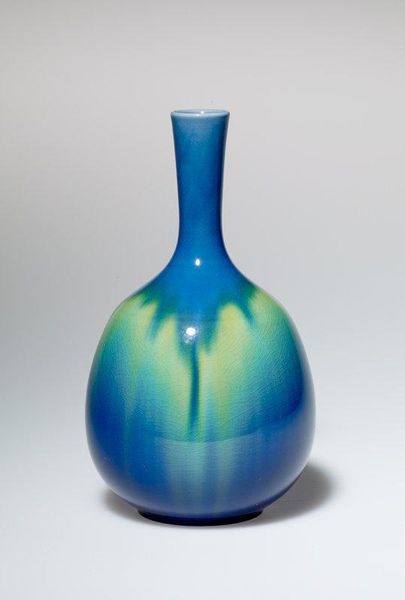
ceramic
#
art-deco
#
ceramic
#
geometric
#
ceramic
#
line
#
decorative-art
Dimensions: 17 3/8 x 6 1/2 in. (44.13 x 16.51 cm)
Copyright: No Copyright - United States
Editor: Here we have Henri Rapin's "Rapin No. 8," created in 1926. It's a ceramic piece, and I'm immediately struck by how the contrasting lines and patterns create a sense of depth and movement. What do you make of it? Curator: The interplay between the pale blue and white striations against the occasional spiraled forms creates an intricate, almost hypnotic visual experience. Observe how the linearity, a key aspect of the Art Deco movement, manifests here not just as straight lines but as curvilinear segments mirroring each other, establishing rhythm through repetition and alteration. Editor: The spirals disrupt the lines. Is there significance in their placement and the stark colour difference? Curator: The placement appears deliberate. The darker tone accentuates these focal points, drawing our eye through the composition. Without the stark tonality shift and their curvilinear contrast against the rigid background linearity, the artwork would forfeit dynamism, perhaps bordering on the monotonous. What feeling do the varied, repeated striations elicit from you? Editor: It is busy but orderly; quite pleasing, I'd say. I see what you mean by rhythmic! It’s interesting how focusing on these visual relationships almost detaches the object from its function as a vase. Curator: Precisely. By bracketing the external allusions, we reveal the object's visual complexity; how a repetitive linearity, can evolve into a complete, balanced aesthetic form. Editor: I hadn't considered looking at it *only* as line, form, and color, isolated from its historical or utilitarian context. Thanks for widening my view! Curator: Indeed! And viewing through your eyes reaffirms how art can provoke dialogue regarding basic intrinsic compositional choices that can shape our aesthetic perception.
Comments
minneapolisinstituteofart almost 2 years ago
⋮
Although the Sèvres factory is noted for its eighteenth and early nineteenth century ceramics, the firm continued to manufacture designs by contemporary artists, including many pieces in the Art Deco style of the 1920s and 1930s. Henri Rapin, director of art projects at the Sèvres factory between 1920 and 1934, designed the forms of several pieces, then collaborated on the decoration with contemporary artists. Little is known about the designer of the abstracted floral decoration on this vase, Odartchenko, who worked at Sèvres for a short time beginning in 1925. The decoration on this vase was executed by Prosper-Joseph Walter who worked at Sèvres from 1919 to 1928.
Join the conversation
Join millions of artists and users on Artera today and experience the ultimate creative platform.
